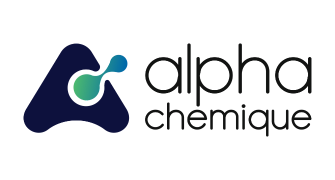Glyoxal 40% Introduction:
Glyoxal 40%, a chemical compound with diverse applications, holds a substantial presence across various industries. This transparent and odoriferous liquid is characterized by its colorless nature. Derived from the combination of ethylene glycol and formaldehyde, Glyoxal 40% exhibits versatile properties that enable its utilization in a wide range of applications. In the subsequent sections of this article, we will delve into the introduction, properties, benefits, uses, and significance of Glyoxal 40%.
Properties:
Glyoxal 40% possesses several properties that contribute to its functionality and applications. It is a highly reactive compound, capable of forming cross-links with various substances, such as proteins and cellulose. Glyoxal 40% has excellent stability, solubility in water, and low volatility. Additionally, it exhibits antimicrobial properties, making it useful for preservation purposes.
Benefits:
The use of Glyoxal 40% offers numerous benefits across different industries. Firstly, it acts as a cross-linking agent and fixative. In the textile industry, Glyoxal 40% is used to improve the crease resistance, wrinkle resistance, and dimensional stability of fabrics. It enhances the durability of textiles and reduces the need for frequent ironing or pressing.
Furthermore, Glyoxal 40% possesses antimicrobial properties, making it a suitable ingredient for preserving a variety of products. Its ability to inhibit the growth of microorganisms extends the shelf life of cosmetics, personal care items, and certain industrial products. By preventing microbial contamination, Glyoxal 40% helps maintain the quality and safety of these products, ensuring their efficacy and longevity.
Uses:
- Textile Industry: Glyoxal 40% finds extensive use in the textile industry as a cross-linking agent. It is applied to fabrics during the finishing process to improve their dimensional stability, wrinkle resistance, and durability. Glyoxal-treated textiles exhibit enhanced crease recovery properties and retain their shape even after repeated washing.
- Preservatives: Owing to its notable antimicrobial properties, Glyoxal 40% is extensively employed as a preservative in diverse industries. It effectively prevents the growth of bacteria, fungi, and other microorganisms, thereby prolonging the shelf life of various products. Common applications of Glyoxal 40% as a preservative include cosmetics, personal care products, paints, adhesives, and other industrial formulations. By inhibiting microbial growth, Glyoxal 40% contributes to the product’s stability, safety, and quality.
- Chemical Manufacturing: Glyoxal 40% serves as a key intermediate in the production of various chemicals. It is used in the synthesis of resins, polymers, and glyoxylic acid. Additionally, Glyoxal is employed in the manufacturing of pharmaceutical intermediates, agricultural chemicals, and dyes.
- Paper Industry: In the paper industry, Glyoxal 40% is used as a paper cross-linking agent. It enhances the strength, wet-dry strength ratio, and dimensional stability of paper products. Glyoxal-treated paper exhibits improved resistance to tearing and aging.
Conclusion:
Glyoxal 40% is a versatile compound with a wide range of applications. Its properties as a cross-linking agent, fixative, and antimicrobial make it valuable in the textile, preservation, chemical manufacturing, and paper industries. The benefits of using Glyoxal 40%, such as improved fabric durability, extended product shelf life, and enhanced paper strength, contribute to its significance in various applications. Understanding the properties, benefits, and uses of Glyoxal 40% allows industries to harness its potential and create high-quality products.

